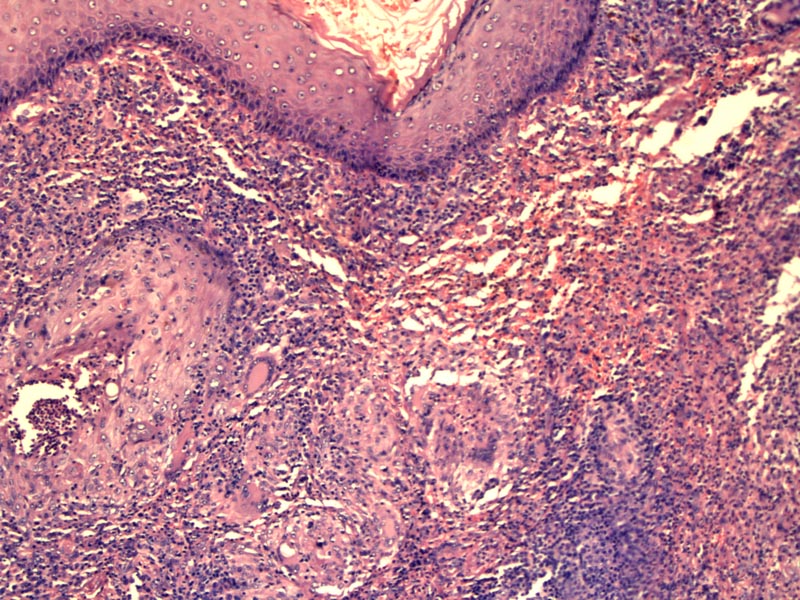

Granulomatous inflammation is seen in the dermis. Epithelioid granulomas are surrounded by a heavy lymphocytic infiltrate.
Epithelioid granulomas with central microabscess formation can be appreciated.
Note the presence of a spherule within the granuloma.
Coccidioides immitis, an endemic dimorphic fungi of the American Southwest, usually causes an asymptomatic infection or a self-limited mild respiratory illness. Infection occurs via inhalation of arthrospores in the soil. In about 10% of individuals, infection can lead to a severe pneumonia, which can subsequently disseminate into other organs such as meninges and skin. Immunosuppressed individuals such as HIV patients are especially vulnerable.1
For the most part, cutaneous coccidioidomyocsis is a result of dissemination from a pulmonary focus. However, primary cutaneous infection can occur via direct innoculation of the spores into the skin. Regional lymphadenopathy usually accompanies the resultant ulcerated plaques and nodules. Farmers, construction workers and lab technicians may be at risk for this route of infection.2
1 Kumar V, Abbas AK, Fausto N. Robbins and Cotran Pathologic Basis of Disease. 7th Ed. Philadelphia, PA: Elsevier; 2005: 755.
2 McKee PH. Pathology of the Skin with Clinical Correlations 2nd Ed. London, UK: Mosby-Wolfe; 1996: 4.67